We love Regency fashions and are so excited about releasing an entirely new line of styles from the early 1800s for you this week. This, and the fact that we know how much our fans love Bridgerton helped me to decide to do a short series on Regency fashion fun. In today’s first post, I will go over some of the basics of what we consider “Regency dress” and next week I will outline some of what I loved and some of what I didn’t love about the way that Bridgerton portrayed the clothing of the time.
Like many of you, I have absolutely loved the ephemeral feel of both the literature and clothing of this era and am excited for the chance to dive in a bit. If you have a question or a favorite part about this time period please let me know in the comments.
How did we get here?
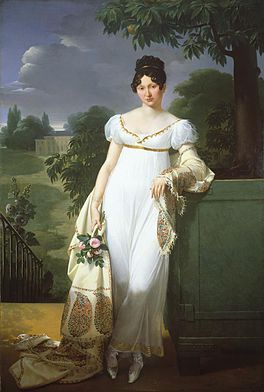
If you look at the fashions that immediately preceded the Regency fashion period, you will see that an enormous deviation took place in a short amount of time, from the very early 1800s to about 1820 (roughly!). While the fashions of the late 1700s focused on opulence and the width of the skirt, there was an elegant, feminine understatement to the Regency “look.” There are multiple reasons for this.
The first is the French trend of leaning away from the fashions that had defined the aristocracy and those who found themselves at the guillotine. The effects of the Revolution were in full-swing at this time and it was trendy to appear to be taking part in a new way of functioning as a society. I think of this very similar to the understated trends of the hippie movement which were also in response to separating oneself from the “establishment.” Public figures such as Josephine Bonaparte were painted wearing the new styles.
Many people interested in how France and other countries may re-organize were also interested in neoclassical art and thought. There was a particular focus on ancient Greek and Roman philosophy. It is very easy to see how the high waisted, flowing, light dresses of the early Regency were influenced by these former civilizations.
And yes, in a perfectly ironic course of events, Marie Antionette was probably the first to make the look public (or at least a version of it). Although she was demonized for it, she was influential and could have been the one who got the ball rolling, despite her head also doing the same.
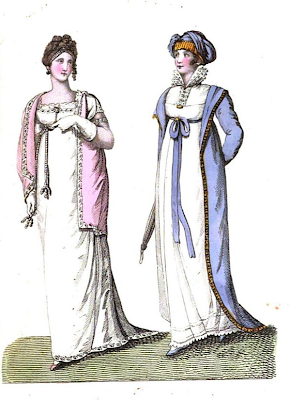
What is a Regency dress?
For the purposes of this post, I will be holding myself back from diving too deep into the scholarly and professional approaches to discussing the details of this topic. Instead, what I will focus on is a look at what is today typically referred to as “Regency dress.” And by that, I mean, the look of the low neckline, high bust. short sleeves, high waist; dainty, and simply chic. I am referring to the look that had variations between the years of roughly 1805-1820. While some say that the Regency ended with Queen Victoria, “Regency dress” began to un-trend in the 1820s, making way for the puffy and elaborate dresses that the early Victorian era would become known for.
So, let us begin.
Stays vs. corsets
Of interest to our readers will be the fact that despite some popular portrayal of this time, the corset was not the preferred undergarment of choice for women during the early 1800s. After all, why on earth would one need their waist tied in a dress with no waist?
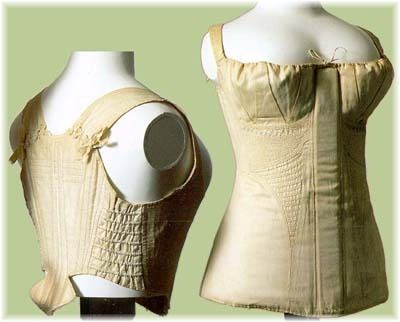
What was instead worn to facilitate the “Regency look” were “stays,” meant to provide some “coverage” for the stomach and smooth lines, but more to accentuate the bust, not waist or hips. Some women would have worn a “short stay” in the summer, mostly meant to give height to the bust, but typically a “long stay” was worn, as it creates a lovely, flowing look.
Stays were made of cotton, flexible, and I have heard that they are quite comfortable to wear.
And of course, a stay would have been worn over a chemise, the first undergarment a woman would put on.
Funnily enough, while women during this period were enjoying more comfortable fashions, it was men who were turning to tight waisted looks. This too was a trend that Bonaparte himself influenced.
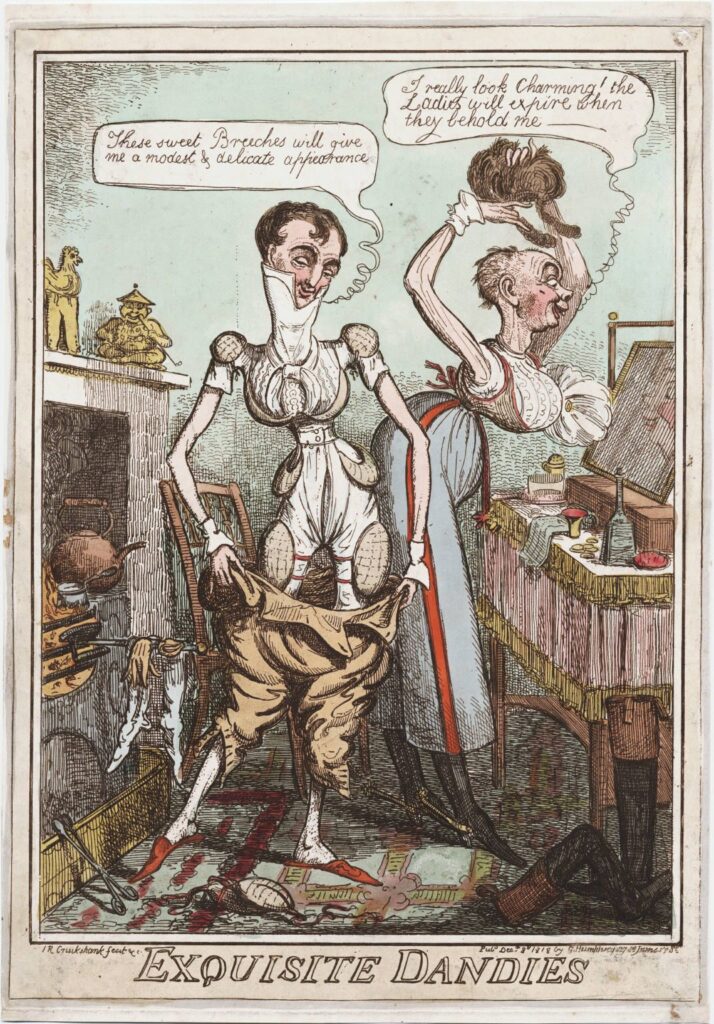
The empire waist strikes
Clearly seen, the neoclassical influence I mentioned earlier led to the temporary trend of the empire waist. And why do we call it the “empire” waist? This too makes perfect sense, as the reason for the shift in fashion sensibilities is because France, the fashion epicenter, had recently moved from a kingdom to an empire, provoking the desire for people to move away from the fashions associated with royalty and the bourgeois. The term was retroactively placed on the high waist, as I have heard it didn’t come into use until the early 20th century.
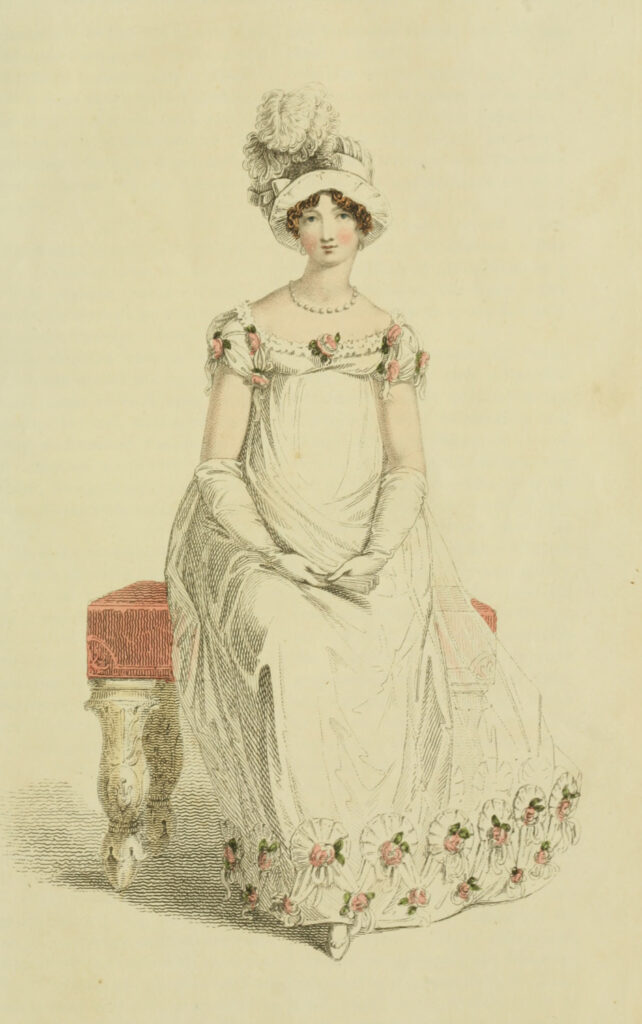
Beginning in the 1790s, the waistline began to creep north, peaking in height at roughly 1817 and then creeping back down toward well, the waist. As noted above, this style required much less tying underneath the clothing, encouraging movement. This is possibly why we see so many women talking walks in Jane Austen novels.
And where were the curves? Although we may think of these dresses as being somewhat shapeless, this is not the case. The dresses were often tied with a drawstring and gathered in the back, creating the sleek train effect that many of us know well. And as for the front, what is evident is that the bosom was meant to be propped up as high as it could go. While the previous corsets brought attention to the hips and compressed the bosom, the stays of the Regency did the opposite. Some refer to this combined look today as “the Regency shelf.”
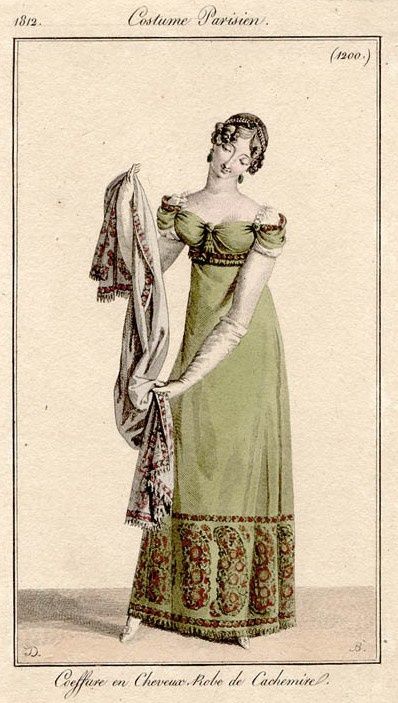
An empire of naysayers
One need only look to the media criticism of the day to gain an understanding of the fashion norms. In her book Corsets and Codpieces, Karen Bowman points out that the powers that be were not all too thrilled with the Regency shelf. One newspaper stated, “A woman, proud of her beauty, may possibly be nothing but a coquet: one who makes a public display of her bosom, is something worse.”
And The Arts of beauty; or secrets of a ladies toilet: with hints to Gentlemenon the Act of Fascinating by Madame Lola Montez states:
…”we see, in eight women out of ten, the hips squeezed into a circumference little more than the waist, and the bosom shoved up to the chin, making it a sort of fleshy shelf, disgusting to the beholders, and certainly most incommodious to the bearer.”
Ouch.
Another feature of the dress is the short sleeve, again in stark contrast to what came before and after. This is something that I love most about this style. I find it interesting that women’s fashions would deviate so drastically from societal norms for such a short period. Again, this is similar to the way that some “hippie” trends came and went during the 60s and 70s when the excitement of change was in the air.
What do you think of the empire waist?
Regency fashion accessories
I believe that the Regency period was a grand one for accessories, as it gave them a chance to shine next to the understated dresses. These special touches are what I think make the time period so special. Some of the popular accessories included:
Caps
The Regency took a 180 when it comes to women’s hairstyles. Hair was worn close to the head with a small-cap for modesty. While some head coverings and hairstyles that came before and after were determined by class, age, or livelihood, caps were a universally embraced style, especially in France. Says the Jane Austen museum:
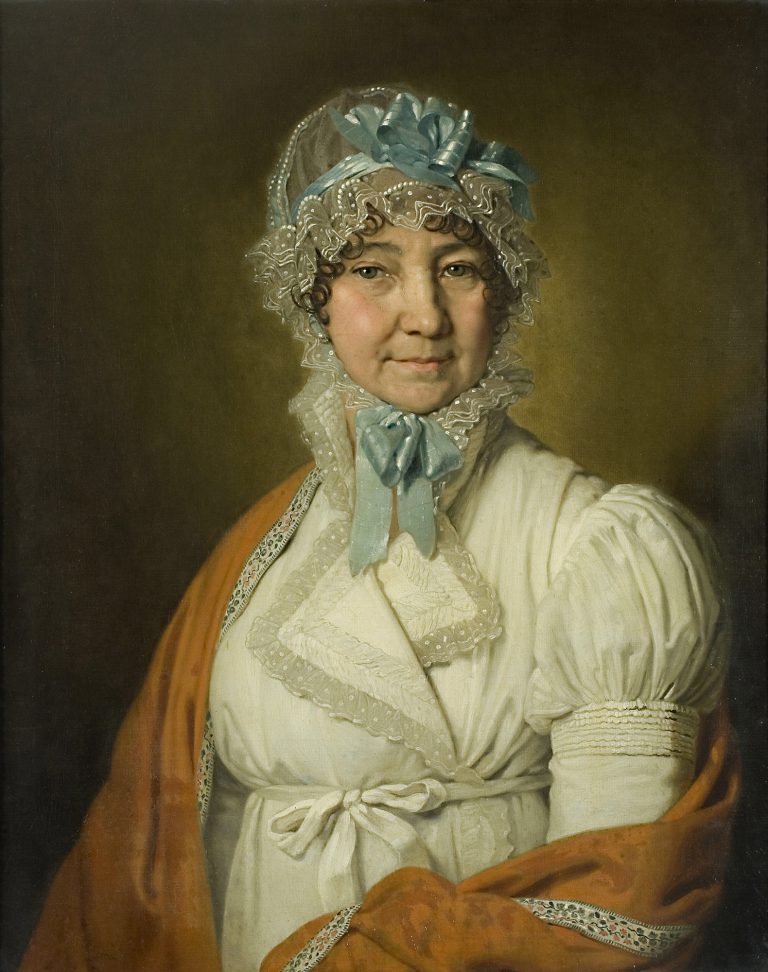
Photo source: MimiMatthews.com
“Regency caps were worn by all classes of women for many different reasons. Widows and mothers wore caps. Some married women chose to wear them. Housekeepers and servants wore them. Children wore them. Old maids wore them. The only ones who didn’t were young ladies, during that period of time when they were no longer children, and not yet old maids (or as Caroline Austen put it, “ladies who were not quite young”), though Jane Austen took to wearing them at the age of twenty-three.”
Two things stick out to me about the use of lacy caps during this time. First, is that women often wore them under a hat or bonnet, perhaps just for stylistic purposes or perhaps hair was washed irregularly. The second is that women wore their caps indoors. As we have seen in previous discussions about etiquette, in other time periods, wearing a head covering indoors was rarely done.
Poke bonnets
I think that the reasons bonnets became popular during the Regency were first, that the clothing facilitated being outdoors, and they do a very good job of covering the sensitive skin of the face. Second, I think that they may have been seen as a country fashion or a fashion of simplicity, which is what many people were going for.
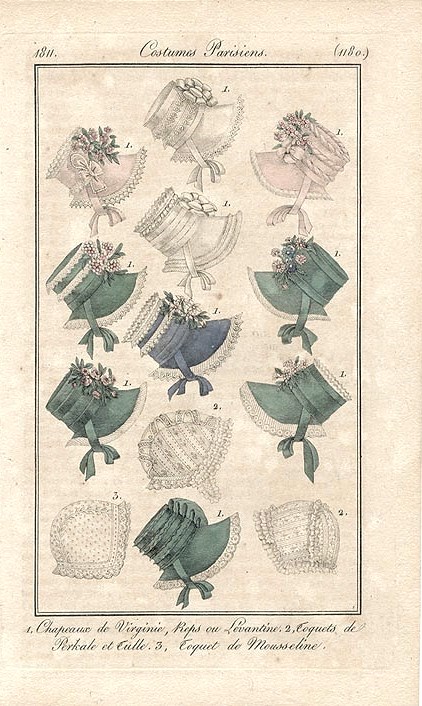
While the purpose of a cap was for style, modesty (I know, it doesn’t make sense to us today), and while they were worn indoors, the bonnets do seem to be for practical outdoor purposes.
This is a fashion that would stick around for a while, though typically for outdoor excursions.
Hand muffs
You know I love this accessory! This was one item of clothing that women did not attempt to downplay, possibly because their clothing was a bit chilly. At the same time as we see the height of a woman’s bosom peak during this time, we also see the size of a hand muff peak during the Regency.
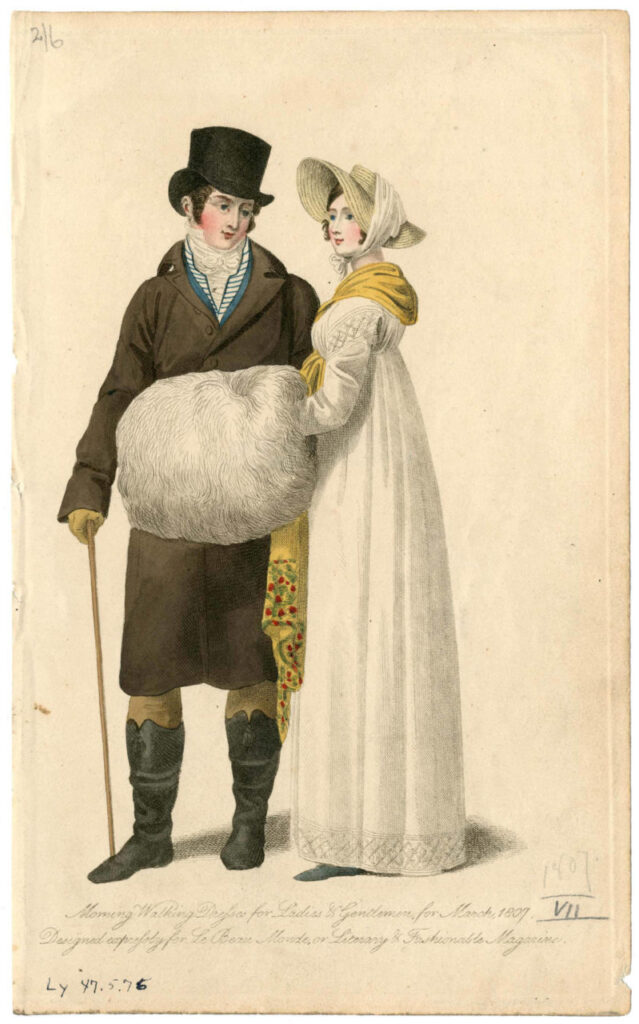
Reticule (teeny, tiny handbags)
The history of pockets is an interesting one. Prior to the Regency era, women would carry their belongings in removable pockets, often tied around the waist and easily concealed in the folds of their dress. The lightweight fabrics and absence of a waist made this impossible during these decades. The reticule came to the rescue.
A reticule is simply a petite, pretty purse, made to easily wear around the wrist. I am sort of obsessed with these as well as the later chatelaine and will do a combined post sometime this year.
What else would you like to know?
Did I leave anything out? Please let me know your biggest question about Regency dress or anything fashion history that you are curious about and I may include it in a future post.
And now, for a cup of tea and to daydream about long walks in serene fields with my bonnet fitted perfectly on top of my head.
Keep exploring:
Fashion evolution: Regency period
The Tea Gown: Bridging Victorian and Edwardian Fashion
The Many Adaptations of Jane Austen’s Emma
Cover photo source: University of Washington

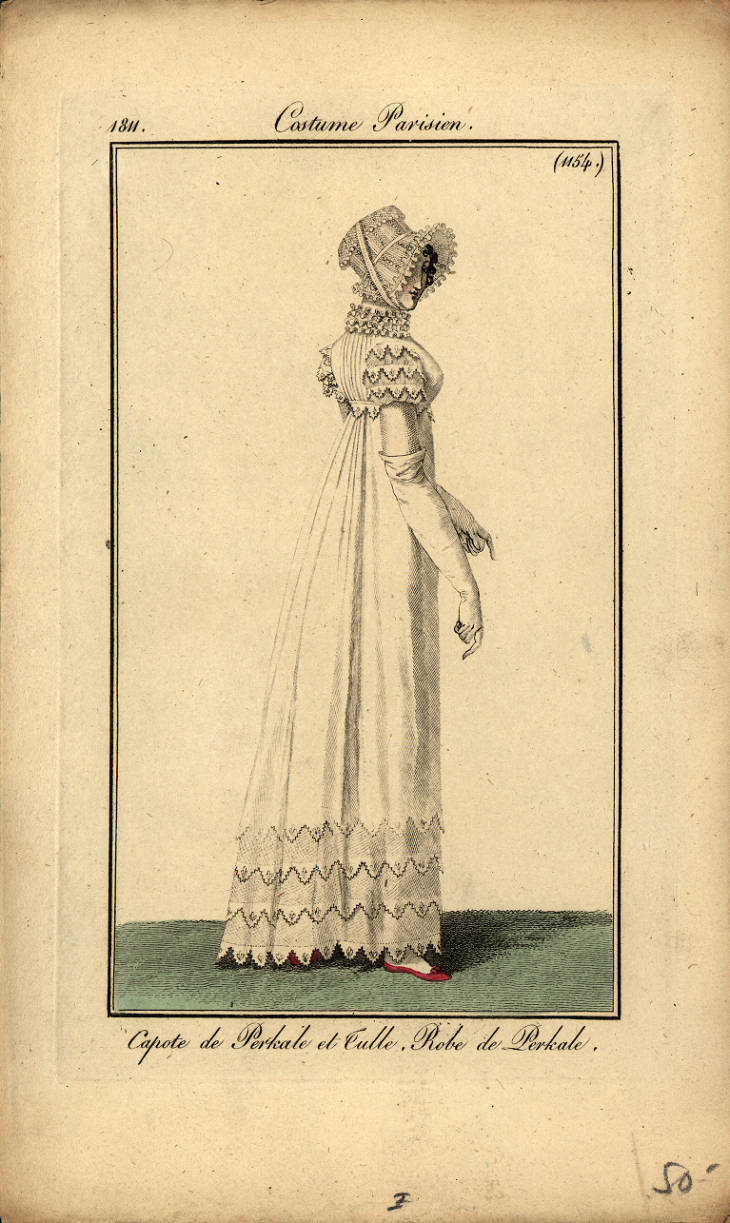




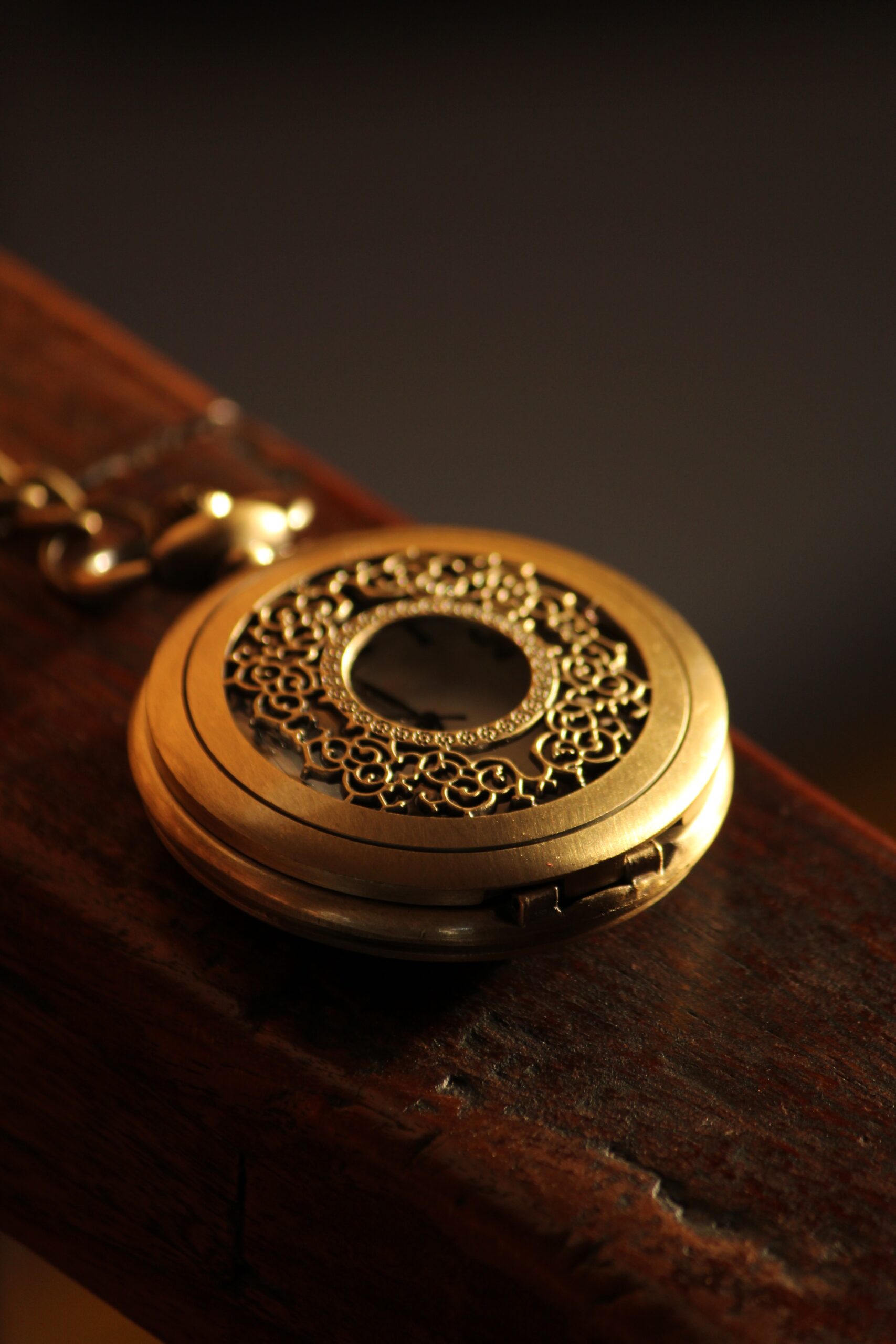
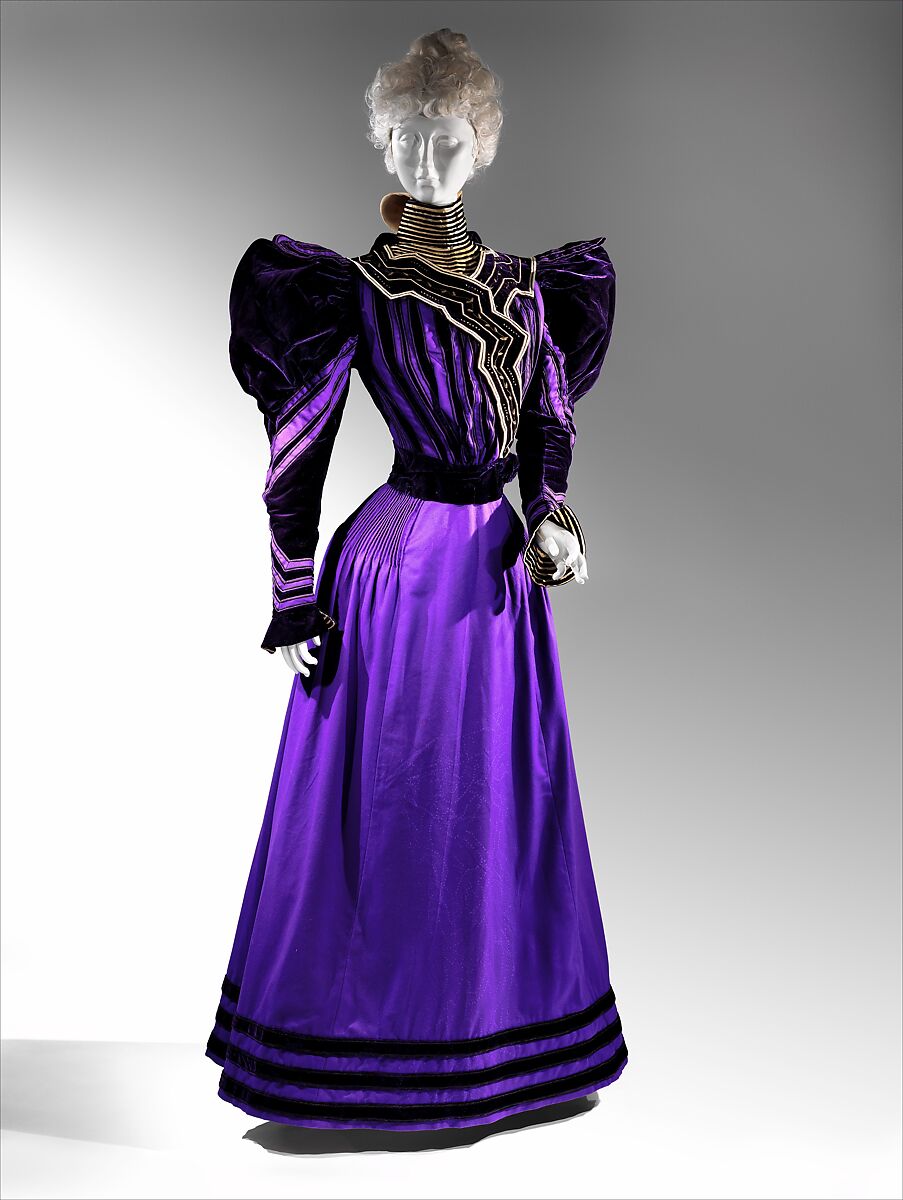

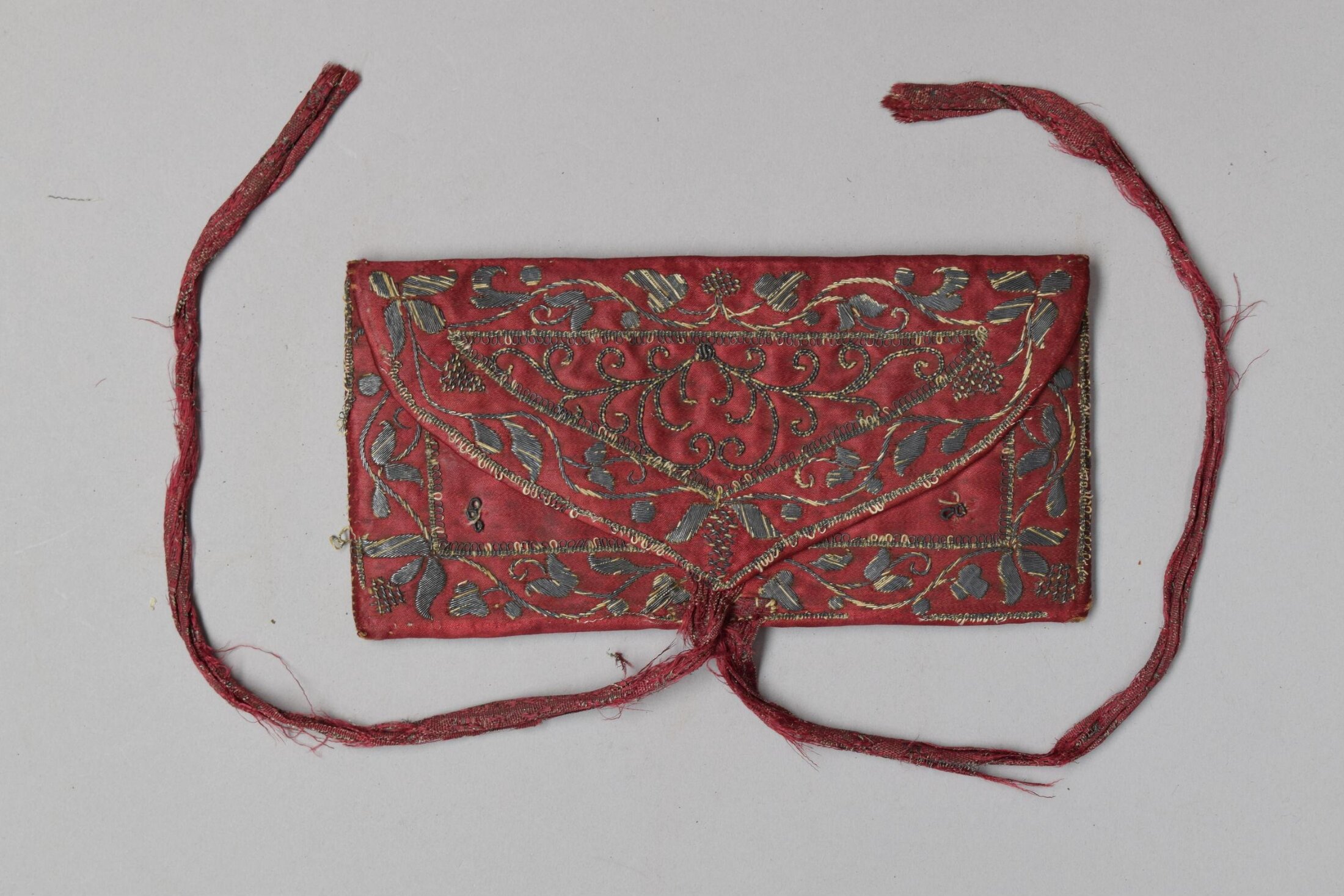
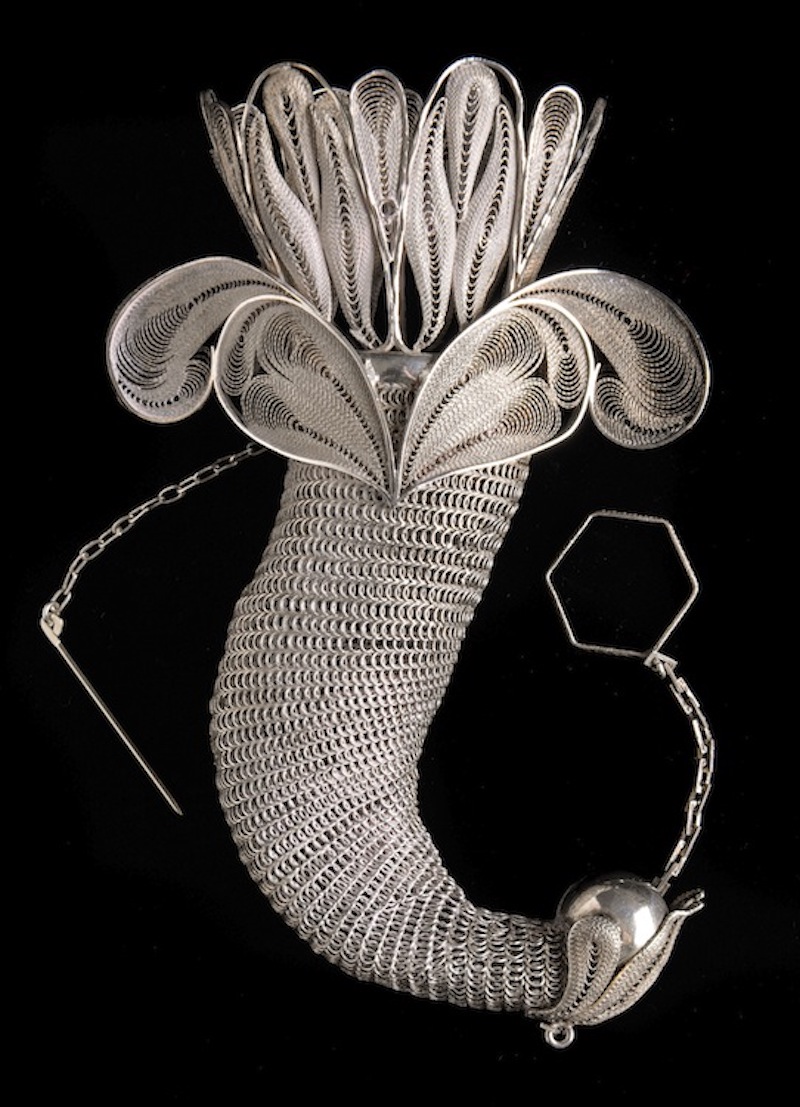
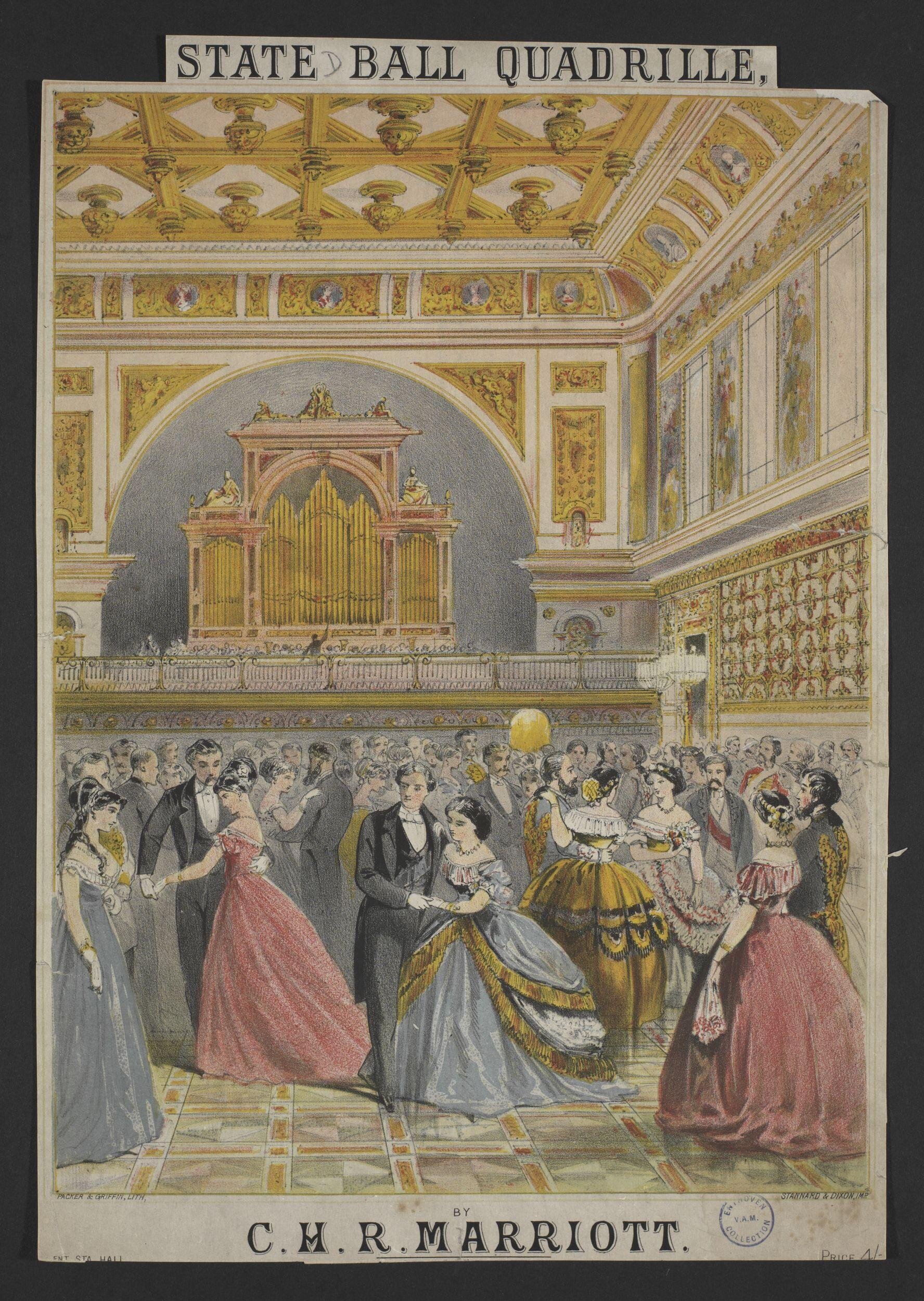
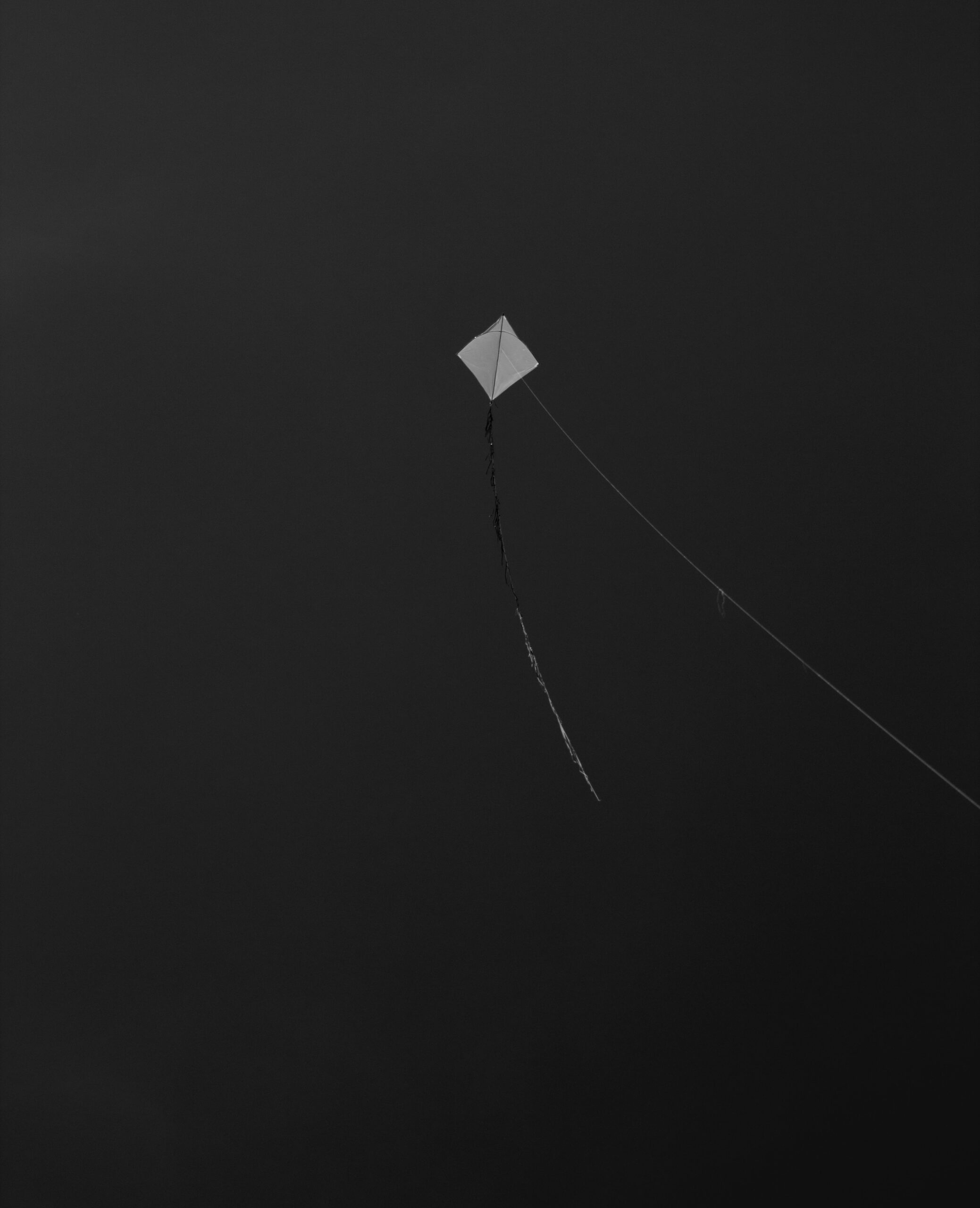
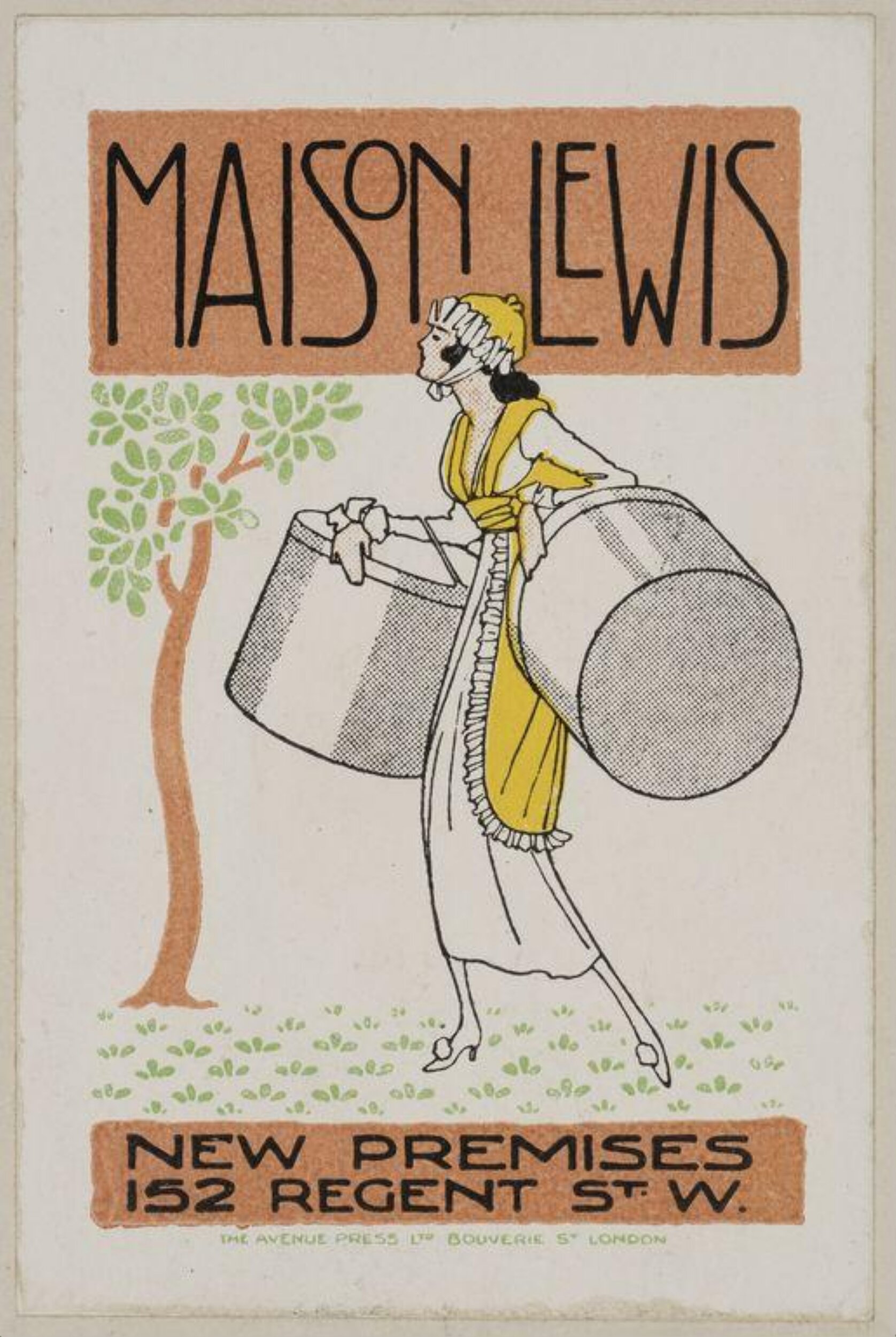
I have never heard of that and would very strongly doubt it!
Lovely article! I was wondering, did women actually wet, or dampen, their muslin gowns to make them a bit sheer or clingy? I read this in novels but have no idea if it is accurate. Thanks for the research into one of my favorite eras in fashion.